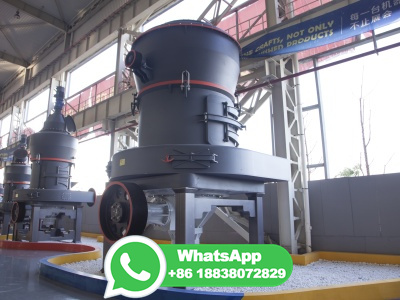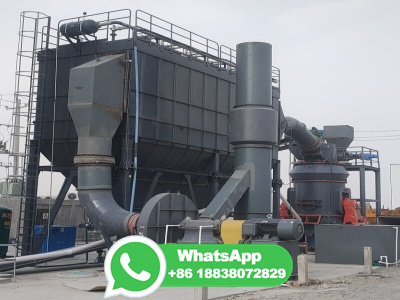
WEBJan 5, 2023 · Coke is a porous, carbonrich material used to make steel. The coke is mixed with iron ore and limestone to make molten iron, which is then further treated and heated to make steel. Generalized diagram showing how steel is made. In the steelmaking process, coke is used in the blast furnace as a (1) fuel to produce added heat; (2) .
WhatsApp: +86 18203695377
WEBApr 5, 2023 · The blast furnace and direct reduction processes have been the major iron production routes for various iron ores ( goethite, hematite, magnetite, maghemite, siderite, etc.) in the past few ...
WhatsApp: +86 18203695377
WEBAs the mixture of iron ore, coke and limestone heats, the hot waste gases are collected and cleansed. They are then used to help heat the air blast, required if blast furnace is to reach the high temperatures needed to produce molten iron. The stock level is constantly 'topped up'. Molten iron ore is 'tapped' at the bottom of the blast ...
WhatsApp: +86 18203695377
WEBGuide for manufacturing and making Pig Iron. Following three distinct operations are involved in the manufacturing process of pigiron: (1) Dressing (2) Calcination and roasting (3) Smelting. (1) Dressing: The iron ores as obtained from mines are crushed into pieces of size of 25 mm diameter. This is achieved in the rock crushers of ordinary type. The .
WhatsApp: +86 18203695377
WEBMar 30, 2016 · Characteristics of iron ore for coalbased process. ... Dir ect Reduced Iron: Production. In. Encyclopedia of Iron, Steel, and Their Alloys. T aylor and Francis: New Y ork, Published online: 30.
WhatsApp: +86 18203695377
WEBApr 23, 2024 · Blast furnaces produce pig iron from iron ore by the reducing action of carbon (supplied as coke) at a high temperature in the presence of a fluxing agent such as blast furnaces consist of several zones: a crucibleshaped hearth at the bottom of the furnace; an intermediate zone called a bosh between the hearth and .
WhatsApp: +86 18203695377
WEBThe Marampa Project. The Marampa Project involves production of very highgrade iron ore concentrate with >65% Fe content. Estimated resources are currently approximately billion tonnes of iron ore grading 32% Fe, with the geological potential for material increases. Significant investments have already been made by Gerald Group through SL ...
WhatsApp: +86 18203695377
WEBJan 1, 2022 · Depending on the conditions used for final reduction of iron ore, alternative ironmaking technologies are typically divided into direct reduction (DR) and smelting reduction (SR) processes. The DR process involves the removal of oxygen from iron ore in its solid state at 750–1100°C using solid and gaseous reductants, such as natural gas .
WhatsApp: +86 18203695377
WEBDec 20, 2021 · Production is expected to begin in 2024 (H2 Green Steel, 2021). Other projects. In June 2019, Primetals Technologies developed an H 2based DR process to reduce iron ore fines. The H 2 used in the process could be green hydrogen, H 2rich gas produced by SMR, and H 2rich offgas, all
WhatsApp: +86 18203695377
WEBDRI production. Direct reduction of iron is the removal of oxygen from iron ore or other iron bearing materials in the solid state, without melting, as in the blast furnace. The reducing agents are carbon monoxide and hydrogen, coming from reformed natural gas, syngas or coal. Iron ore is used mostly in pellet and/or lumpy form.
WhatsApp: +86 18203695377
WEBFeb 1, 2009 · The main advantage of this technology is that, the fine iron ore, which accounts for about twothirds of world's ironore production, can be charged directly without prior treatment to the process ...
WhatsApp: +86 18203695377
WEBAug 15, 2015 · The sintering process is a wellestablished process in use at integrated steel making plants. It consists of an agglomeration through an oxidizing/reducing fusion of iron ore fines (sinter feed) and fluxing agents (lime, limestone, etc.) as well as recirculated materials (dust, sludge, etc.) at temperatures between 1200 °C to 1400 ° C. A carbon .
WhatsApp: +86 18203695377
WEBThe Bessemer Process for Steel production and; The Open Hearth Process of Steelmaking; Steel manufacturing Principle of the Bessemer Process. The main raw materials for Steel production in a blast furnace are Iron ore, limestone, coke, and some scrap steel. These materials are charged into the blast furnace from the top and .
WhatsApp: +86 18203695377
WEBFeb 5, 2024 · By extracting metallic iron without producing carbon dioxide, the new process could even be carbon negative, at least for part of the world's iron production. 5 Feb 2024. 12:00 PM ET. By Robert F. Service. A new process aims to reduce carbon emissions generated by forging iron in blast furnaces. Ty Wright/Bloomberg via Getty .
WhatsApp: +86 18203695377
WEBThe Pelletizing Process. The production of iron ore pellets from fines to finished product can differ based on a variety of factors. As such, it's important to note that the process described here is a generalized approach subject to many variations. In general, three primary phases occur in iron ore pelletizing: Mixing/Preconditioning
WhatsApp: +86 18203695377
WEBIron ore reduction is an important process in the iron/steelmaking industry, where iron ore is reduced to metallic iron, usually with coal, coke, natural gas, CO, or hydrogen as the reducing agents. ... Iron production and Steelmaking are very energyintensive processes with an estimated global energy intensity of GJ/ton [1]. The whole ...
WhatsApp: +86 18203695377
WEBJan 1, 2022 · Iron ore production by ore type since 1965 is illustrated in Fig. Since 1970s, total iron ore production has grown, whereas the production of Premium BM ore has remained steady since 1973. ... (Pelletizing is a treatment process used for very fine or powdery ores; Sintering is a process used to agglomerate iron ore fines in preparation ...
WhatsApp: +86 18203695377
WEBJan 1, 2013 · Abs tract. The process of developing an iron ore mine from exploration data through to informed mining. decisions provides an ex ample of a Complex Ada ptive System. The ...
WhatsApp: +86 18203695377
WEBJul 1, 2021 · Iron and steelmaking is the largest single industrial CO 2 emitter, accounting for % of all CO 2 emissions on the planet. This fact challenges the current technologies to achieve carbonlean steel production and to align with the requirement of a drastic reduction of 80% in all CO 2 emissions by around 2050. Thus, alternative reduction .
WhatsApp: +86 18203695377
WEBJan 13, 2023 · The production of iron from its ore involves a redox reaction carried out in a blast furnace. The furnace is filled at the top with the iron ore oxide most commonly hematite ((Fe_2O_3)) but can also magnetite ((Fe_3O_4)), carbon called coke and limestone ((CaCO_3)). ... As the process continue the molten iron flow down through .
WhatsApp: +86 18203695377
WEBIron ore Hematiterich iron ore. Iron ore is a mixture of rocks and minerals containing enough iron content and sufficient volume and accessibility for mining and transportation to be economically mined. Around five percent of the Earth's crust is composed of iron making it the fourth most abundant element. Globally, iron ore is most commonly found in .
WhatsApp: +86 18203695377
WEBPrimary world nickel production in 2020 was kt Ni; 69% ( kt) of them came from oxidized nickel ores (laterites) and 31% from sulfides. Productionwise, % of the kt came from pyrometallurgical and % from hydrometallurgical processes. For a long time, FeNi had a 20–40% Ni analysis, but in 2006 a new FeNi quality came into .
WhatsApp: +86 18203695377
WEBDirect reduced iron is iron ore in the form of lumps, fines or pellets that have had the oxygen removed by using hydrogen and carbon monoxide. Typical sources of carbon monoxide are natural gas, coal gas, and coal. Other energy inputs into the production process often include oil and electricity. Since much of the energy used is in the form of ...
WhatsApp: +86 18203695377
WEBThe schematic represents the HBI briquetting process. Direct Reduced Iron is discharged hot from the reduction furnace and screwfed into the nip between two counter rotating rollers. ... Its members account for more than 80% of production and international trade in orebased metallics. Orebased metallics merchant pig iron (MPI), direct ...
WhatsApp: +86 18203695377
WEBJun 21, 2018 · The process gases carbon monoxide ( CO C O) and hydrogen ( H2 H 2) are blown into the furnace at temperatures of approx. 1000 °C and flow through the iron ores. The reduction of iron oxides takes place according to the following chemical equations: Fe2O3 Fe2O3 + 3CO + 3H2 → 2Fe → 2Fe + 3CO2 + 3H2O (1) (2) (1) F e 2 O 3 + 3 C .
WhatsApp: +86 18203695377
WEBWe produce clean iron with the lowest carbon emissions using low grade ores and intermittent renewable energy. The Challenge. Every year, the world produces billion metric tonnes of steel predominantly by melting highgrade ores with coal and other minerals in furnaces operating at 1,600 degrees Celsius, emitting 10% of global carbon ...
WhatsApp: +86 18203695377
WEBProcessed taconite pellets as used in the steelmaking industry, with a US quarter ( in./ mm) shown for scale.. Iron mining in the United States produced 48 million metric tons of iron ore in 2019. Iron ore was the thirdhighestvalue metal mined in the United States, after gold and copper. Iron ore was mined from nine active mines and three .
WhatsApp: +86 18203695377
WEBSep 18, 2019 · How steel is made. First, the raw materials, either iron ore or scrap iron (depending on the process), are converted into molten steel. The orebased process uses a blast furnace or smelter and the scrapbased process uses an electric arc furnace. Next, the molten steel is poured and solidified in a continuous caster.
WhatsApp: +86 18203695377
WEBFeb 3, 2022 · Iron ore is a rock from which the metal iron is extracted. About 98% of the world's iron is used to produce steel. Pure iron is an element and a soft grayishwhite metal. Other than meteorites that fall from the sky, iron is never found by itself in nature. Most iron is part of minerals that contain other elements.
WhatsApp: +86 18203695377
WEBElevated levels of Chinese steel production propped up the global demand for iron ore in 2016, since China accounts for close to twothirds of the global seaborne iron ore trade. Global iron ore production grew 5% yearonyear in 2016, to a total of 2,106 million tons. Lump ore production increased 26 million tons to make up 15% of global ...
WhatsApp: +86 18203695377